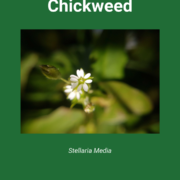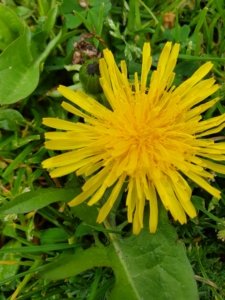Chickweed is nutrient and medicinal component rich, and grows just about everywhere, and in large quantities. It tastes like a mild rocket leaf raw, and is so freely available that it’s a surprise that we don’t use it more.
Habitat
Stellaria media is widespread in North America, Europe and Asia. A cool-season annual plant native to Europe, but naturalized in many parts of North America.
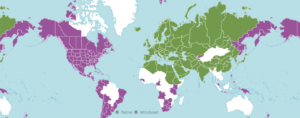
Description
The plants are annual and with weak slender stems, they reach a length up to 40 cm, and can form mounds 50 cm high on rich soil. Sparsely hairy, with hairs in a line along the stem. Very common in lawns, meadows, waste places and open areas. It likes growing in disturbed soil and can produce new plants from seed several times a year.

Etymology
The name Stellaria is derived from the word ‘stellar’ meaning ‘star’, which is a reference to the shape of its flowers. Media is derived from Latin and means ‘between’, ‘intermediate’, or ‘mid-sized’.
Identifying Features
- Hairs – Stellaria has fine hairs on only one side of the stem in a single band and on the sepals. This like of hairs has been observed to switch sides of the stem when it reaches a leaf axil. Other members of the family Caryophyllaceae which resemble Stellaria have hairs uniformly covering the entire stem.
- Leaves – The leaves are oval and opposite, the lower ones with stalks.
- Flowers – Flowers are white and small with 5 very deeply lobed petals. Usually 3 stamens and 3 styles.
- Seeds – The flowers are followed quickly by the seed pods. This plant flowers and sets seed at the same time.
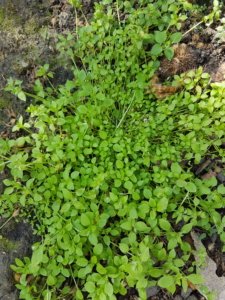
Food Uses
Stellaria media is edible and nutritious, and is used as a leaf vegetable, often raw in salads. It is one of the ingredients of the symbolic dish consumed in the Japanese spring-time festival, Nanakusa-no-sekku.
- Young leaves – raw or cooked as a potherb. Very nutritious, they can be added to salads whilst the cooked leaves can scarcely be distinguished from spring spinach. I find that they taste like a mild version of rocket, so make an excellent salad leaf (although when young, I throw in the stem and all, not just the leaves).
- Seed – allegedly ground into a powder and used in making bread or to thicken soups; however, it would be very fiddly to harvest any quantity of this seed since it is produced in small quantities throughout most of the year and is very small. The seed contains 17.8% protein and 5.9% fat.
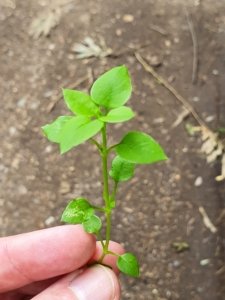
Medicine Uses
Chickweed has a very long history of herbal use, being particularly beneficial in the external treatment of any kind of itching skin condition. It has been known to soothe severe itchiness even where all other remedies have failed.
Harvesting
Young leaves can be available all year round if the winter is not too severe. Seeds may also be available for most of the year.
For medicines, Chickweed is best harvested between May and July, it can be used fresh or be dried and stored for later use.


